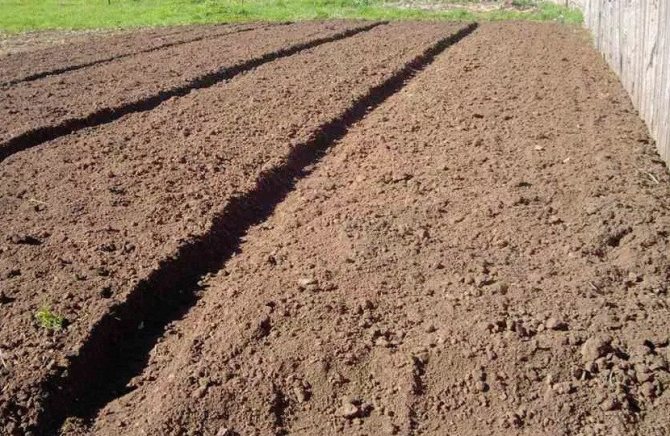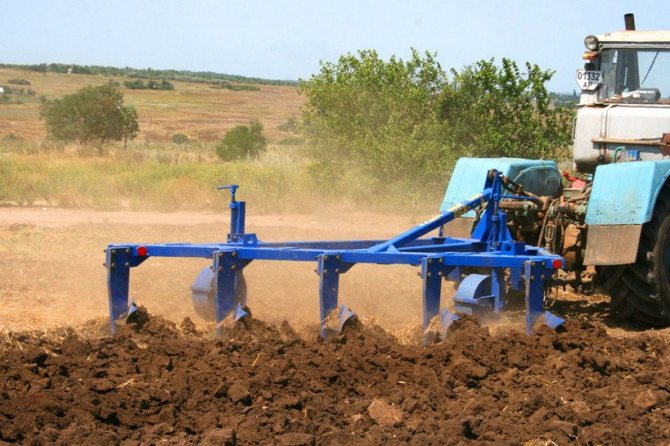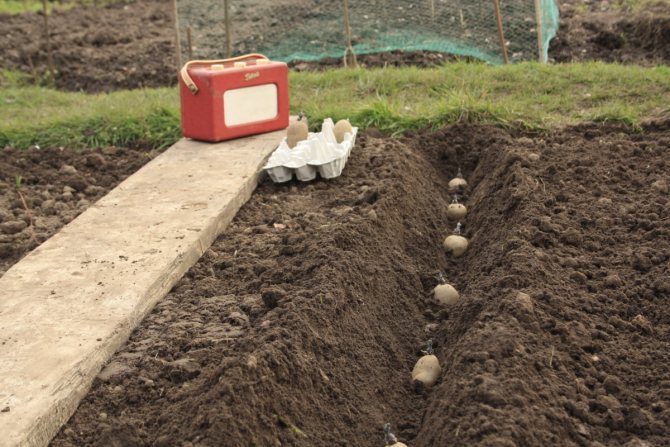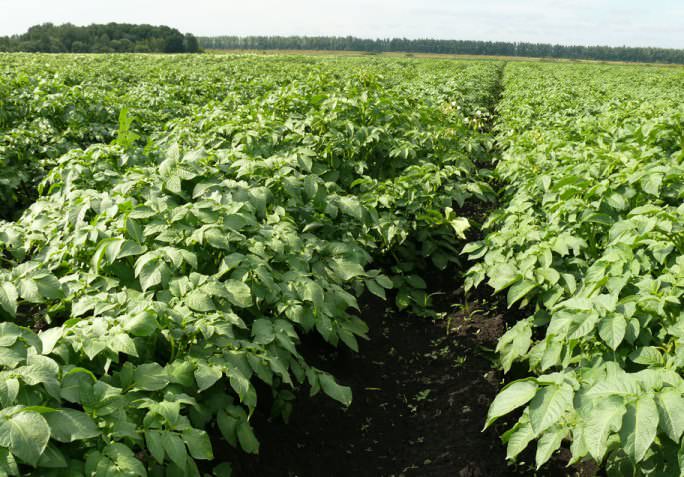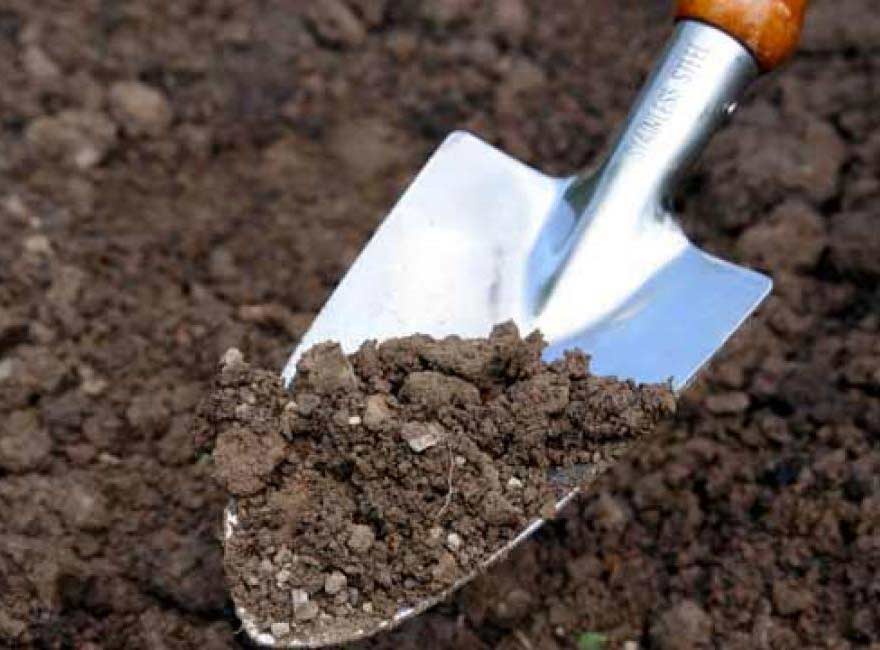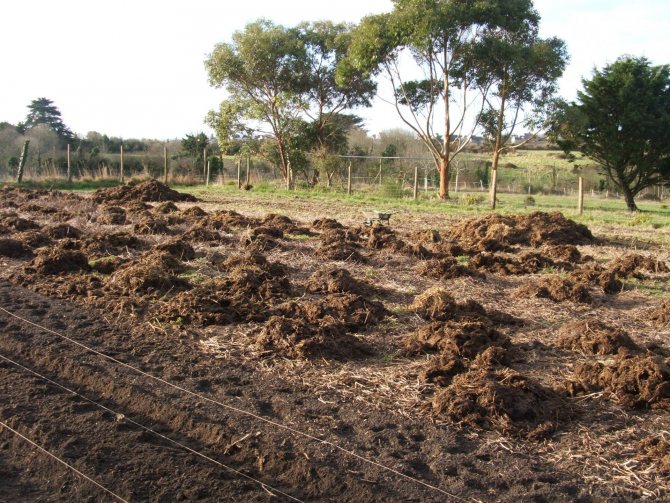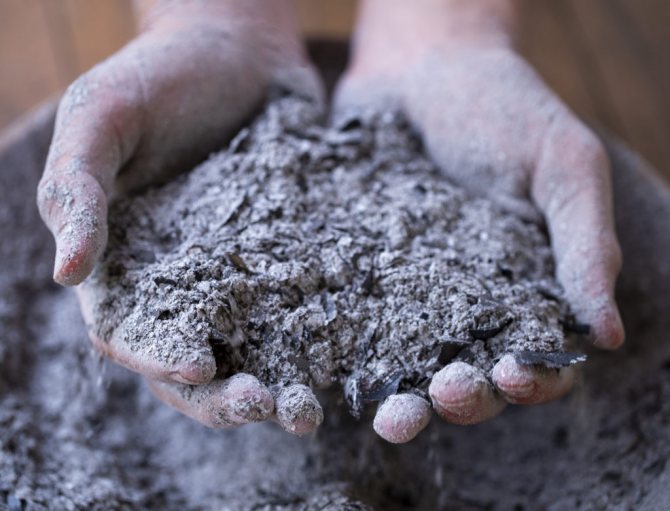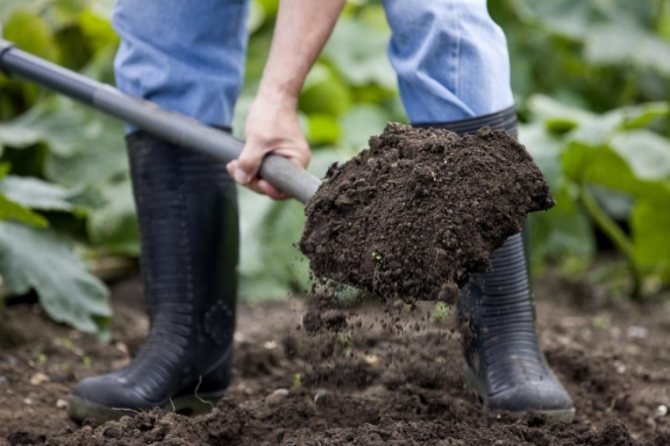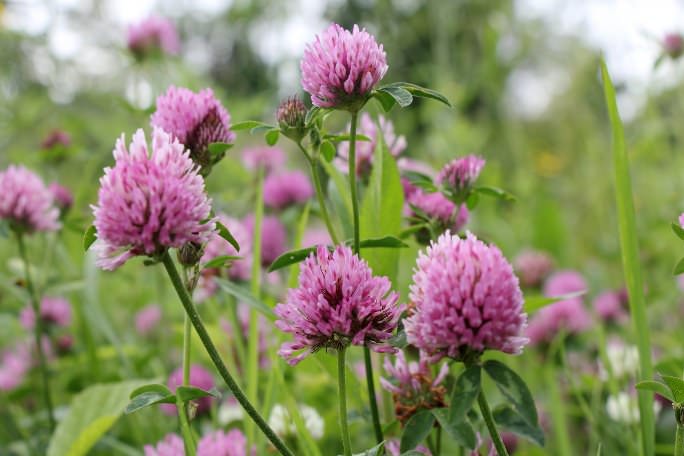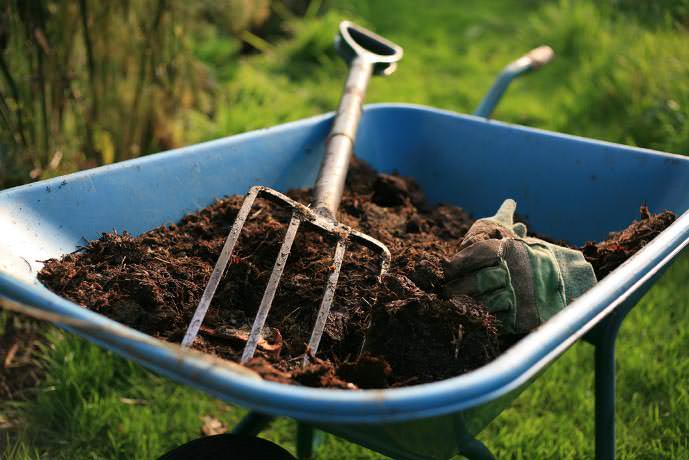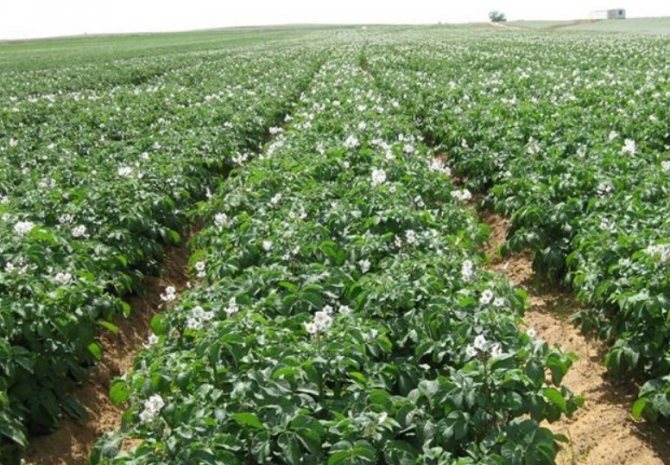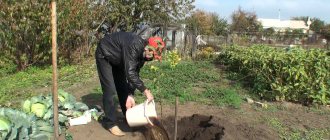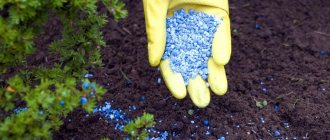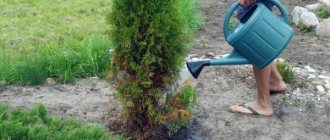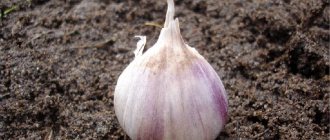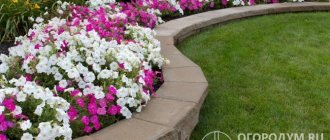Why is it so important to fertilize the land for potatoes in the fall
Fertilizing the soil immediately after harvesting is necessary to restore its fertility, because a lot of nutrients are spent on the formation of green mass and tubers.
During the autumn-winter period, organic matter has time to overheat, and mineral fertilizers partially decompose, forming easily digestible compounds. This is the right time to disinfect the soil and normalize its acid-base balance. Less fertilizers are required in the land prepared in the fall, and their effect will be stronger.
Soil preparation

Potatoes are picky about soil fertility and love a thick layer of humus. To ensure such conditions, organic trenches begin to be prepared in the fall. This method allows you to get the maximum yield even in small areas, since the roots of the plants receive natural heat, drainage and fertilization.
How to Prepare Organic Potato Trenches
Dig grooves 35-40 cm in depth and width. A passage of 60-80 cm is left between the trenches.
Organic waste is placed at the bottom of each groove: flower stalks, weeds, mown grass, pumpkin tops, fallen leaves. Sprinkle with earth on top. To accelerate decomposition and enrich the soil with beneficial bacteria, microbiological preparations are used - "Shining", "Vostok", "Baikal".
In a few months, organic matter has time to ferment, and the soil becomes looser and more nutritious.
Feeding rules in the fall
Autumn soil preparation for planting potatoes includes:
- cleaning the site from tops and weeds;
- leveling the soil;
- sowing green manure;
- digging up the soil;
- application of organic and mineral fertilizers.
Soil preparation
To begin with, the area is cleaned of tops. The green mass of nightshades (potatoes, tomatoes, peppers and eggplants) is burned, the tops of cucumbers and zucchini can be sent to a compost pit, after having been watered with a lime solution - 1 kg of substance per 10 liters of water.
Weed residues are potentially dangerous for the future harvest. In addition to shading the area and consuming nutrients from the soil, weeds attract pests (wireworms) and can transmit diseases. To get rid of rhizomes, they carry out plowing of the field or manual digging. Additionally, the soil can be treated with herbicides.
They dig up the soil in order to increase its water and air permeability, saturate it with oxygen and get rid of the larvae of insect pests hidden in the lower layers of the soil. Sometimes it takes two autumn digging at intervals of 30-45 days, especially if the ground is too heavy.
Organic fertilizers
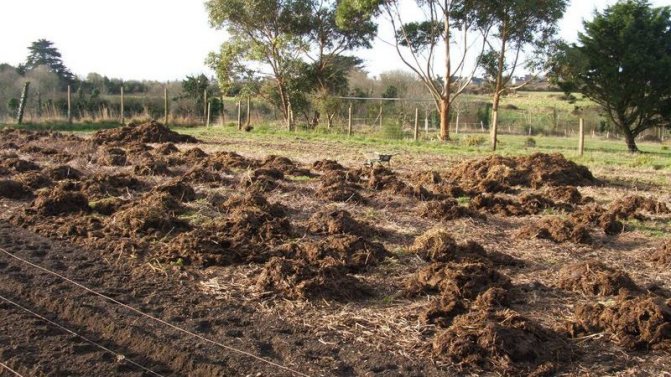

The most demanded organic matter is manure, compost and ash. Micro- and macroelements in them are balanced by nature itself and are easily absorbed by plants.
In order not to attract pests preparing for winter, gathering on the heat released by manure, it is better to apply it in late autumn, after the first frost, after mixing it with compost. In addition to the usual mullein, horse and rabbit manure can be used. Pork lasts up to 18 months, so it is brought in only in exceptional cases.
Freshly cleaned from cattle is not suitable for autumn digging, since it contains seeds of weeds that will sprout in spring.
Attention! Avoid organic fertilization if the soil is infected with potato nematode.
Minerals and siderates
In the fall, substances are introduced that dissolve more slowly and do not wash out of the soil longer:
- "Nitroammofosku";
- urea;
- "Superphosphate".
The general rule is observed: it is better to slightly undernour potatoes than to allow an excess of nutrient compounds. For example, manure reduces the rate of mineral nitrogen preparations, "Superphosphate" is not mixed with urea. You should be careful with the combination of inorganics with ash.
How to fertilize the soil for potatoes in the fall without using special means? A gentle way of enriching the soil is sowing it with green manure. These plants are not grown for harvest, but as organic fertilizer. Siderata do not allow weeds to develop, protect the soil from dehydration and weathering, and prevent deep soil freezing.
For potatoes, mustard, rye, rape and phacelia are optimal - they sprout quickly and gain weight.
Normalization of acidity
With the help of fertilizers, you can equalize the pH of the soil: acidify alkaline with leaf compost or peat, lime acidic with ash.
To determine acidity, different methods are used:
- Pay attention to wild vegetation. Strongly acidic soils are preferred by plantain, pansies, horse sorrel and horsetail, and neutral and slightly acidic - clover, nettle, field bindweed, coltsfoot.
- Check the reaction to vinegar. The pH neutral soil will bubble.
- Use commercial acidity test strips.
Presowing treatment in spring
The land, rested over the winter, needs to be refreshed so that it is finally ready before planting potatoes.
Plowing
Experienced gardeners say that spring plowing, carried out taking into account the characteristics of the soil, contributes to a better harvest. To do this, it is worth remembering that deep moldboard (up to 30–35 cm) processing is suitable for:
- chernozems;
- floodplain soils;
- peat soils.
But sod-podzolic plots are plowed with plows without dumps or with soil deepeners, loosening the ground to a depth of 25-30 cm.
Harrowing
This procedure is necessary in the spring to retain moisture in the soil for the future harvest. During harrowing, the soil on the surface of the earth is crushed, and its ball prevents evaporation. For the best result, the procedure should be carried out with heavy harrows.
In addition to retaining moisture, such loosening of the soil allows for high-quality heating of the soil, and oxygen saturation ensures the vital activity of beneficial microorganisms.
However, it is important to choose the right time for harrowing. If done too early, the wet soil will be compacted even more by plowing. If you are late, then the earth will lose moisture and become covered with a dry crust.
Important! The optimal time for harrowing a vegetable garden is when clods of earth begin to acquire a grayish color.
Cultivation
Cultivation differs from the previous procedure in that the tool loosens the soil, however, it does not turn the soil layers, therefore moisture is retained.
This is the last step in preparing the soil for planting potatoes. Inter-row cultivation is recommended for this crop. It is carried out first before planting, and then, as needed, is organized in the process of growing potatoes.
We suggest that you familiarize yourself with Wilprafen for chlamydia treatment regimen
During the first spring sinking, cultivation is done at a depth of 6–16 cm: the faster the soil dries, the deeper the plowing is done. In the future, the standard loosening depth in such cases is 12 cm, but if weeds are actively growing on the site, then the processing is done deeper, up to 14 cm.
Fertilizers
Fertilizers have special properties and must be applied to the soil in certain quantities and combinations. We offer options for fertilizing potatoes in the fall.
Cow dung
The advantages of mullein are high nutritional value, availability and relative cheapness. It is possible to agree on the supply of cow dung on almost any farm or in household yards.
The chemical composition of cow dung includes a large amount of nitrogen (especially bedding mullein with rotted straw and hay residues), phosphorus, potassium, calcium and magnesium.
According to the degree of decomposition, they are distinguished:
- fresh,
- semi-overripe, obtained after 3-4 months of storage;
- humus, the formation of which takes 6-12 months.
Fresh manure is rich in ammonia, often contains eggs of worms and other pathogenic microflora. To get rid of the parasites, the mullein is composted or infused. The temperature inside the compost heap reaches 65 ° C, and the eggs of helminths die, the percentage of germination of weeds decreases. therefore the most valuable is the semi-overt type - such biomass is loose and small, it contains a lot of nutrients.
Humus looks like a homogeneous, dark mixture with a pronounced earthy smell. It is good for growing seedlings, mulching and as a well filler during and after planting.
Reference. It is usually advised to apply 5 kg of manure per 1 m², but these rates are acceptable if feeding is done every 3-4 years. With annual fertilization, from 500 g to 1 kg is sufficient, depending on the type of soil.
Bird droppings
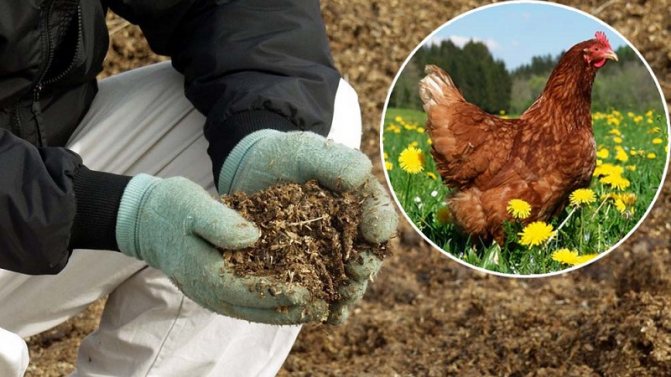

Chicken manure is the most effective fertilizer for potatoes, since it is less watery than the excrement of other poultry. It is strong and fast-acting and should be used with caution.
Fertilizer benefits:
- poultry manure contains 3 times more nitrogen and phosphorus than cow manure, contains potassium in the form of highly soluble salts, manganese, sulfur, etc .;
- has a prolonged effect, so it is enough to add it once every 2-3 years;
- increases the resistance of crops to late blight, scab, root rot and other infectious diseases.
Composting chicken manure is introduced into the soil for potatoes. To do this, it is sprinkled with plant residues, peat and earth and left to ripen for the entire summer period. Application rate per 1 m² - 500-700 g of droppings.
Reference. Specialty stores sell dried and sterilized poultry manure products in the form of granules, balls and powder. They are safer than fresh fertilizer.
Compost
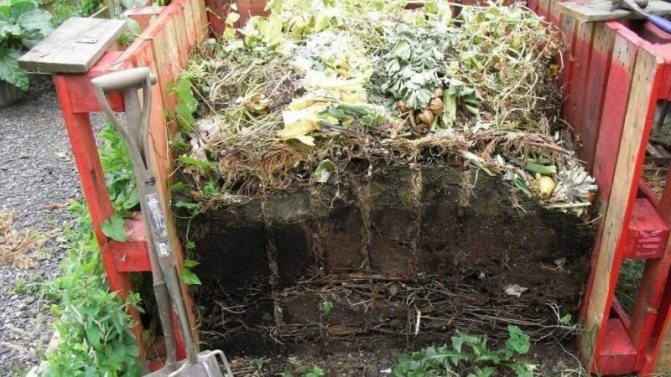

This naturally occurring product is the most affordable fertilizer, because you can make it on your own from almost any organic waste: food residues, straw and hay, sawdust, tops of root crops. To accelerate maturation, special catalyst substances are introduced into the compost, and mineral additives are added to enrich the composition.
Attention! In order not to make a breeding ground for fungal and bacterial diseases from the compost pit, you should not put nightshade tops (potatoes, tomatoes, eggplants, peppers), apples, spoiled bread in it. Fruits with large seeds and weeds with seed boxes and roots should be avoided.
Half-rotted compost is suitable for autumn digging; during the winter, the remnants will have time to completely decompose. It is introduced according to the principle of a puff cake, alternating with manure, straw or fresh cut grass, and 10-15 cm of ordinary soil is poured on top and watered with water or a solution of microbiological fertilizers.
Wood ash
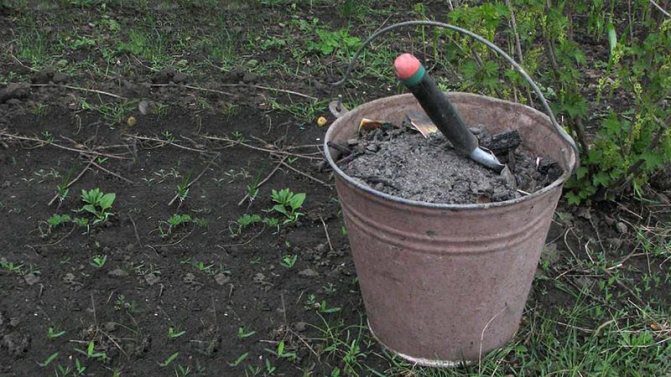

The main purpose of this fertilizer is to alkalize acidic soils and increase plant resistance to diseases.
The composition largely depends on the initial raw material:
- straw ash, especially after burning sunflower and buckwheat stalks, leads in terms of potassium content - 25-35%;
- ash from birch and pine firewood is the richest in calcium - 30-40%.
Other nutrients include phosphorus in an easily assimilated form, manganese, magnesium, sulfur, boron, iron, and molybdenum.
Ash cannot be used simultaneously with nitrogen fertilizers, for example, manure, since it activates the activity of nitrogen-fixing bacteria. Its best companions are humus (compost) and peat.
The long-term effect of ash application is especially noticeable on heavy clay soils, but it is washed out faster from sandy soil.
Reference. Ash is used in a crumbly form and as a solution - 100-150 g per 10 liters of water. In the fall, apply 60-100 g of fertilizer per 1 m² of soil.
Phosphate fertilizers
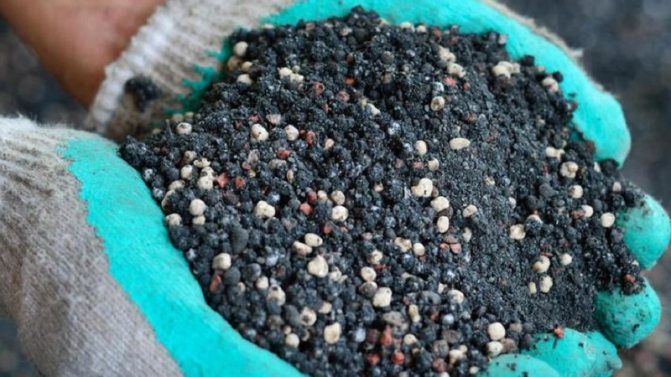

Among phosphate fertilizers, the most popular are:
- Phosphorite flour... Contains 19-30% calcium phosphate. Suitable only for podzolic and peaty soils and is applied in combination with acidic fertilizers, for example, with ammonium sulfate or manure.
- Simple and double "Superphosphate" include 16-20% and 43-46%, respectively, of water-soluble calcium phosphate. They are used on all types of soils.
- Combined fertilizers - "Nitrofoska" and "Nitroammofoska". They also contain nitrogen and potassium.
For autumn soil preparation for potatoes, choose Nitroammofoska (30 g per 1 m²), as well as simple (20 g) or double (10 g) Superphosphate in combination with nitrogen and potassium fertilizers.
Important! Phosphates work best in tandem with potash fertilizers, so they need to be applied at the same time.
Urea
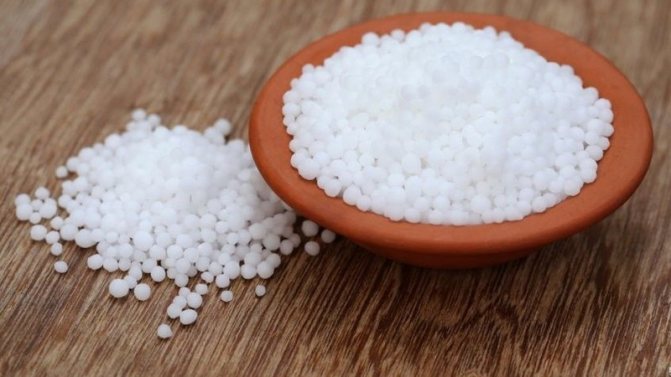

The academic name of the fertilizer is urea. It has been used in agriculture since the 18th century to enrich the soil with nitrogen.
Urea dissolves well in water, but is not washed out of the soil under the influence of precipitation, therefore, it requires careful use. Most often, such fertilizer is applied inside the hole when planting tubers, and then in the form of root and foliar dressings during the summer. In autumn, use immediately after harvest to avoid the formation of harmful compounds at low temperatures.
It is interesting:
How to feed cucumbers with a mullein.
Rules for feeding cucumbers with chicken droppings in the open field and in the greenhouse.
Feeding tomatoes with urea: why is it needed and how to do it.
Nitrate fertilizers
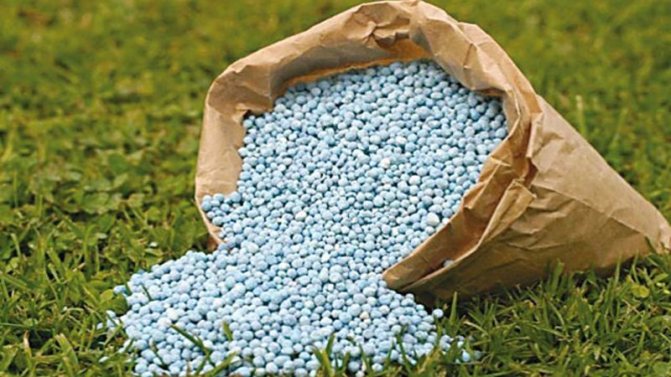

Saltpeters contain nitrogen in the form of nitric acid - nitrates, they quickly dissolve in the soil. In autumn, after harvesting potatoes, sodium nitrate is mainly used as fertilizer.
The lack of such fertilizers in the rapid leaching from the soiltherefore it is recommended to apply them in the spring, shortly before sowing.
Reference. Nitrate fertilizers are physiologically alkaline, therefore, they are effective on acidic soddy-podzolic soils, and they are avoided on saline soil and salt licks.
Ammonia fertilizers
These include:
- ammonium nitrate in granules;
- aqueous ammonia, or ammonia water;
- nitrogen-phosphorus fertilizers - "Ammophos" and "Diammophos".
Nitrogen in the ammonia (ammonium) form dissolves well in water and is quickly absorbed by plants. It evaporates just as quickly from the soil, therefore, ammonia substances are introduced into the soil to a depth of 3-4 cm and sealed.
Potash


Potatoes love potassium, but not all potash formulas are created equal.
Potassium chloride slows down the growth of plants and reduces the amount of starch in the tubers, therefore, it is better to choose sulfate forms for fertilizing. But if you apply chlorine-containing potash fertilizers in the fall, they will disinfect the soil and partially wash out of it by the spring, without harming the plantings.
Potassium sulfate (potassium sulfate) enriches the soil with sulfur and has a positive effect on the keeping quality of tubers. However, this shape is not suitable for neutral and alkaline soils.
Soil quality improvement technology
A variety of methods and substances are used to improve the qualitative composition of the soil.There are four main soil parameters to be improved: earthworm abundance, pH, drainage and nutrient content.
| Qualitative indicators of the soil | Enhancement technology |
| PH level | Improvement of too acidic soil with a pH of 4.5-5.5 involves the introduction of calcium carbonate, bone meal or peat ash. Alkaline soil with a pH of more than 7 requires oxidation through the introduction of peat or manure. Neutral soils require standard fertilization |
| Drainage and aeration | Heavy soil needs aeration and better drainage, while light sandy soil needs structural improvement and increased water retention. For this purpose, compost, construction sand, perlite, vermiculite and water-retaining polymer crystals are used. |
| Fertility indicators; earthworms | The introduction of basic fertilizers helps to increase the nutritional value of the soil, and also makes the soil attractive to earthworms, which absorb organic waste and turn it into humus useful for plants. |
We suggest that you familiarize yourself with the Recommendations of a cosmetologist for face care
Fertilizers
The soil improvement system by applying fertilizers depends on the condition of the soil at the site. It is imperative to improve heavy clay, peat, acidic and sandy soils, as well as salt licks. For heavy clay composition, organic fertilizers based on straw humus, peat, building sand, compost and sod land are recommended. A good result is obtained by regular application of lightening and loosening components, as well as ash, lime and manure.
Sandy soil is improved by the introduction of straw humus and peat, and organic fertilizers and quick-acting mineral fertilizers should also be applied more often.
Peat-bog land is enriched and improved with manure, slurry, compost, sawdust and microbiological preparations. Fertilizers are also applied with a high content of phosphorus and potassium available to plants. To improve the structure of the soil, sand, compost and clay flour are added.
Sandy loam soils require regular enrichment with peat and compost, and mineral fertilizers are recommended to be applied in small doses, but often enough.
It is recommended to fertilize medium and loamy soils with organic matter, including the introduction of manure or compost for the autumn processing of the site. Organic and mineral fertilizers are applied as needed.
Siderata
Siderata are plants that are grown before planting the main crop and contribute to the enrichment of the soil with useful elements. Using green manure plants is the best and most economical way to enrich the soil in your garden. The most beneficial plant in each specific case should be selected based on the nature of its impact.
| Green manure plant | Impact on soil |
| Legumes | Nitrogen saturation |
| Cruciferous cereals | Saturation with nitrogen, prevention of mineralization |
| Leguminous cruciferous asteraceae | Protection of soil from erosion and weeds |
| Rape and colza | Increase in the amount of organic matter |
| Mustard legumes | Removal of phosphates not assimilated by plants |
| Oil radish | Prevention of loss of minerals |
| Legumes cruciferous | Improving the structure, loosening |
| Legumes Compositae | Increased nematode resistance |
Disinfection
It is quite difficult to disinfect the soil in open ground for a number of reasons, the main among which are the laboriousness and high cost of such an event. However, there are several methods that allow you to carry out the disinfection of the land on your own and with a minimum investment of time and money.
| Name | Product type | Using |
| Bleaching powder | Chemical | Six months before planting tubers, sprinkle 100-200 g of the drug per square meter |
| Formalin | Chemical | A month before planting the tubers, dissolve 250 ml of a 40% solution of the agent in 10 liters of water for processing each square meter of soil |
| TMTD | Chemical | Immediately before planting the tubers, add 10 liters of solution for each square meter |
| "Iprodion" | Chemical | Add to the holes when planting tubers at the rate of 40-60 g per square meter |
| "Fitosporin" | Biological | For spring or autumn soil preparation, add 6 ml per 10 liters of water per square meter |
| "Trichodermin" | Biological | Before planting tubers, add 5 g per 5 liters of soil |
| "Glyocladin" | Biological | Application to a depth of at least 1 cm when planting tubers |
| "Alirin-B" | Biological | Preventive spillage of land on the site at the rate of 5 liters of solution per square meter |
| "Gamair" | Biological | Preventive spillage of land on the site at the rate of 5 liters of solution per square meter |
Potatoes are a demanding crop in terms of placement on the site after other plants. It is advisable to plant it after crops for green fertilization. Perennial legumes and grasses are considered a very good predecessor. However, after such plants, the risk of damage to the vegetable crop by the wireworm increases. In vegetable crop rotations, potatoes should be cultivated after cabbage, cucumbers, onions and corn.
Rules for the selection of fertilizers for different types of soil
The main characteristics of the soil are the presence of humus, soil structure and acidity. To answer the question of how to fertilize a potato field in autumn, you should first determine the type of soil.
Clay soil
Clay soils are heavy and dense, they warm up slowly, poorly permeate moisture and, as a rule, have an acidic environment. Such properties are bad for the potato yield.
Liming helps to reduce acidity. To do this, in the fall, slaked lime or "fluff", dolomite flour, wood ash, ground chalk and crushed eggshells are added to the soil. When using lime, additional fertilization with manure will be ineffective, therefore, organic fertilization is postponed until spring.
To make the soil more air and water permeable, loosening materials are added: sand, light leaf humus, peat at the rate of 1 bucket per 1 m².
Loam
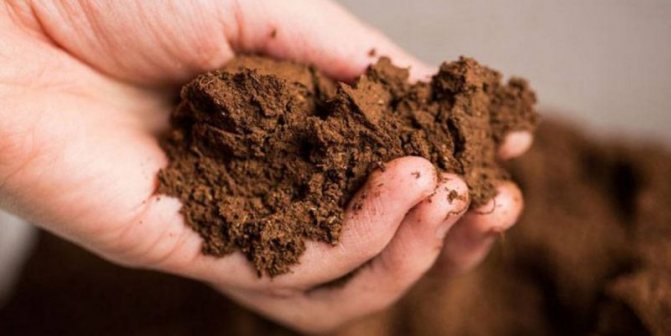

This type of soil is distinguished by:
- granular lumpy structure;
- a sufficient amount of nutrients;
- high level of water permeability and air permeability.
Despite the presence of heavy and dense lumps in the soil, loam is favorable for the cultivation of vegetable crops.
To maintain optimal conditions, loamy soils need to be enriched with organic matter in the fall - compost and manure. Of the mineral fertilizers, sodium nitrate is effective.
Sandy
The main disadvantage of sandy soils is that they are poor in humus (humus content is about 1%), poorly retain moisture, overheat during the day and cool quickly at night. But this loose soil is easy to handle.
To get a good harvest of potatoes, compaction components are introduced into sandy soils: peat, clay flour and compost. Once every 2 years, rotted manure is laid in the deep layers. Potassium magnesium sulfate (potassium magnesium sulfate) helps to fill the lack of magnesium.
Reference. Organic and mineral fertilizers should be applied regularly, as they quickly decompose in sandy soil.
Chernozem


Chernozem is rich in humus (up to 15%), good air and moisture permeability... Due to the high calcium content (70-90%), the reaction of the soil is neutral or close to neutral. Such soil has natural fertility, so it itself can be used as fertilizer.
If the chernozem is of low quality (humus only 4%) or the soil is depleted, it can be additionally fed with nitrogen and phosphorus fertilizers - potassium sulfate or ammonium sulfate. Once every 5-6 years, it is useful to give the land "rest" by sowing green manure.
Features of the use of ash (video)
The potato is a very light-loving plant, and the area for it should be sunny, as well as, if possible, protected from drafts. Loose, well-drained and aerated fertile soils are best suited for growing potatoes:
- on the territory of Polesie, sod-podzolic and peat soils have such properties;
- in areas located in forest-steppe and steppe zones, gray forest soils, podzolized chernozems, typical and ordinary, are optimal for vegetable crops.
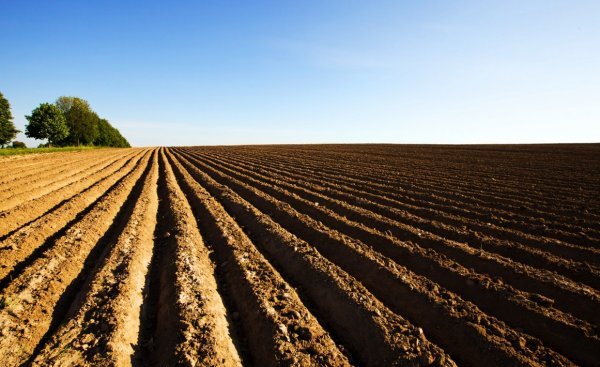

The most acceptable indicators of soil acidity are pH 5.5-7.5. A vegetable crop such as potatoes is very negatively affected by the alkaline reaction of the soil. In addition, it is not recommended to plant potatoes in waterlogged and compacted soil, since it is this soil that provokes premature cessation of tuber growth and excessive carbohydrate pulp.
It is not recommended to cultivate potatoes in the same area for several years in a row. Re-planting potatoes no earlier than three years later reduces the risk of cancer and nematode damage to plants. Planting garlic or marigolds also contributes to the improvement of the land on the site allotted for growing potatoes.
What fertilizers can not be applied in the fall for potatoes
For the winter, fertilizers cannot be applied that:
- contain spores of pathogenic microorganisms - fresh manure, compost from infected tops and weeds;
- upset the balance of micro- and macroelements in the soil.
When combining different dressings, you should not mix some substances:
- alkaline media (ash, lime, chalk) reduce the effectiveness of nitrogen fertilizers (ammonium nitrate, ammophos, ammonium sulfate);
- manure contains a lot of nitrogen, therefore, it does not require additional introduction of nitrogen-containing substances;
- Ammonium nitrate in combination with dry organic matter (peat, straw, sawdust) can lead to spontaneous combustion.
The most common mistakes when applying autumn fertilizers:
- the pH of the soil is incorrectly determined;
- the dosage is violated;
- expired fertilizers are used;
- the recommendations for the combination of substances are not followed.
Destruction of weeds and pests
As a result of additional loosening, the number of weed seeds is noticeably reduced, and pathogens of potato diseases are eliminated. When plowing manually, it would be good to remove the root systems of weeds (wheatgrass) and larvae (beetle, wireworm).
With the help of simple devices, you can collect a lot of bears and Colorado beetles, which would become a threat to the future harvest.
Autumn preparation of the soil on the site is very important. It is worth listening to simple tips so that the next crop grows rich and of high quality.



